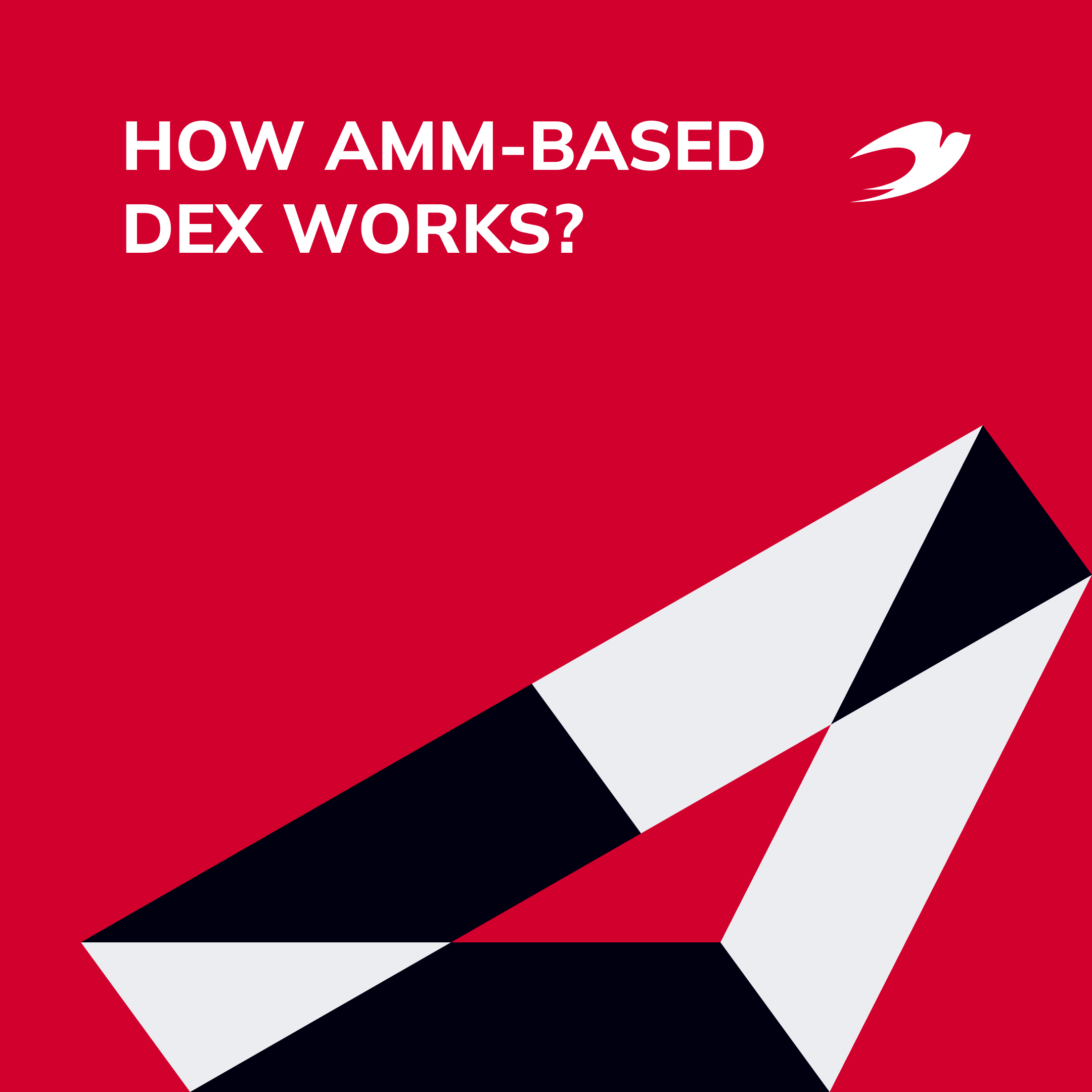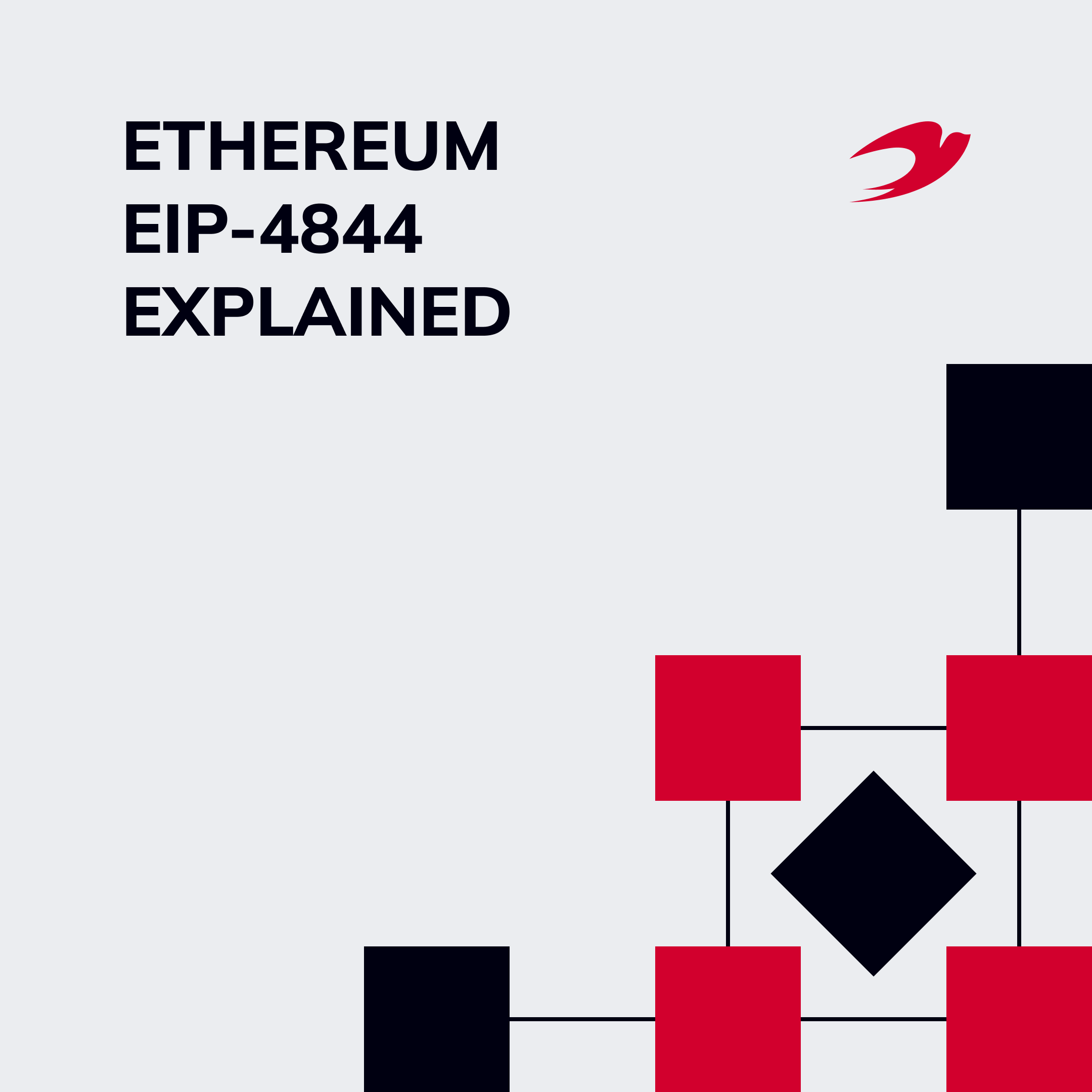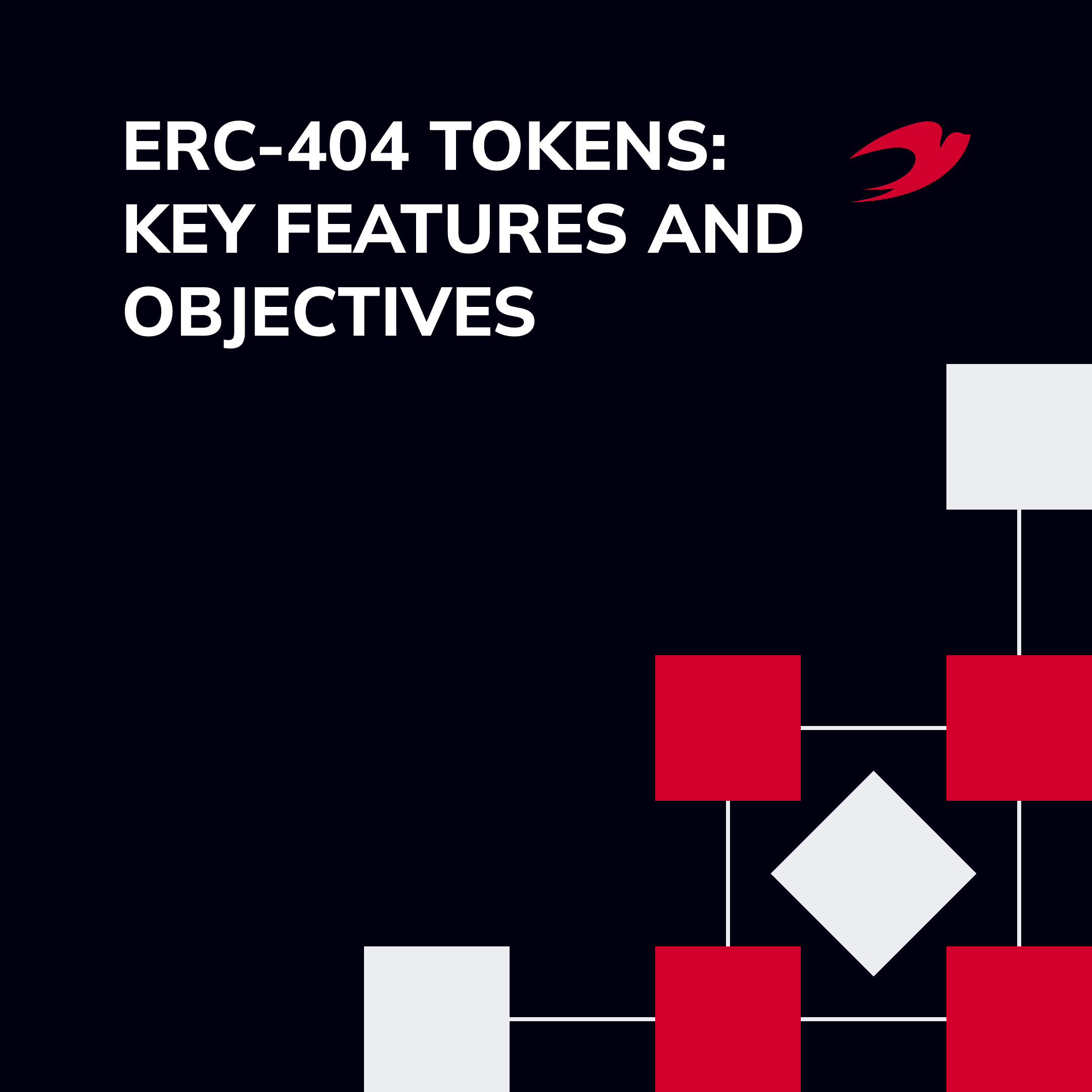DEXs have become a key element of the decentralized financial system (DeFi). As of April 2024, more than 20 DEXs have over $100,000 in daily trading volume. DEX eliminates the middleman and allows users to trade directly from their wallet in a non-custodial manner. However, DEXs also offer unique opportunities in terms of trade execution models.
This article will discuss how to create a decentralized exchange with AMM and best practices for AMM DEX development. Read on if you want to launch DeFi exchange platform.
Looking for your DEX to stand out?
In order to outperform the current solutions, we recommend to concentrate on the thorough examination of available DEXes and create a unique list of features for your exchange to make it stand out! The market has its cometition now, and you need to make sure your product is the best the users can get at the moment.
At IdeaSoft, we do not work as the only tech provder for your solutions, we also help you to analyze the market, perform a careful analysis and introduce a product oriented approach, because we are interested in your startup to succeed! Contact us to get a detalied overview of the current market state in terms of AMM-based solution & consultation regarding your future product.
Table of contents:
- Which are the popular AMMs?
- The Basics of Decentralized Exchanges (DEXs)
- How AMM-based DEXs Work
- Advantages of AMM-based DEXs in comparison to CEX
- How to create AMM DEX?
- Challenges and Risks with AMM-based DEXs
- Summary
Which are the popular AMMs?
Here are popular AMMs with distinct mechanisms:
- Uniswap. Uniswap has indeed been a pioneering force in the automated market maker (AMM) space, constantly evolving with innovations like Uniswap v4.
- Balancer. Balancer is an automated portfolio manager and liquidity provider. Unlike Uniswap’s constant product formula, Balancer allows users to create pools with customized weights for each asset, enabling various trading strategies and fee structures.
- Curve Finance. Curve Finance is optimized for stablecoin trading, focusing on low slippage and low fees for trading assets with similar values. It utilizes specialized bonding curves to facilitate efficient stablecoin swaps.
- PancakeSwap. Operating on the Binance Smart Chain (BSC), PancakeSwap offers lower fees and faster transactions than Ethereum-based platforms. It also features innovative AMM mechanisms and incorporates yield farming and lottery systems.
- Bancor Protocol. Bancor Protocol is an automated liquidity protocol that enables decentralized exchange and automated liquidity provision on the Ethereum blockchain. It was one of the earliest projects to introduce the concept of AMM.
These AMMs have contributed to the decentralized finance (DeFi) ecosystem by offering diverse mechanisms and features that cater to different trading needs and preferences.
The Basics of Decentralized Exchanges (DEXs)
Decentralized exchange (DEX) is a key component of DeFi. Unlike centralized solutions (CEX), DEXs do not verify users, store their funds, or control transactions.
There are two types of DEX: AMM-based and OrderBook-based. We will look at the AMM-based DEXs.
Due to their simplicity and convenience, DEXs based on automated market makers (AMM) have occupied a noticeable niche in the DeFi sphere. This crypto exchange type automatically evaluates the asset’s value using a mathematical formula.
On the technical side, this is realized through a protocol that works using a group of smart contracts that regulate the token exchange process between users. Interacting with AMM DEX implies using the crypto exchanger’s smart contracts that automatically process token exchange transactions.
How AMM-based DEXs Work
Let’s understand how decentralized exchange with AMM works:
- AMM DEX is based on smart contracts and algorithms to enable trading without the need for centralized participation.
- Liquidity pool consists of two or more tokens. Each token has a certain amount of seed funding. Investors (liquidity providers) are free to invest in this pool.
- Prices in the liquidity pool on AMM are determined automatically based on the ratio of the number of tokens in the pool.
- Users can trade tokens from the pool. Because AMM does not rely on a centralized party, orders are executed immediately.
- Commissions are charged to trading users to support AMM. A share of the commissions is allocated to pool participants according to their contribution. This incentivizes the supply of liquidity to the pool.
- Pool can be automatically rebalanced by adding or removing tokens. Smart contracts are responsible for this.
In this way, AMM-driven decentralized exchange enables trading without having to trust a centralized party and provides tools for liquidity support and automatic pricing.
Advantages of AMM-based DEXs in comparison to CEX
Any AMM-based crypto exchange has several advantages over centralized ones. First, they provide a high level of security, as users control the funds themselves and do not need to trust a centralized structure. Second, they have transparency and openness. Finally, they can be accessed anywhere in the world and without verification. Here’s a table comparing the advantages of DeFi DEX with AMM vs CEXs.
| AMM-based DEXs | Centralized Exchanges (CEXs) | |
| Decentralization | Operate on decentralized networks, no single controlling entity. | Centralized control by exchange operators. |
| Security | More secure against hacks and cyber attacks, users have custody of funds. | Centralized control poses security risks, susceptible to large-scale breaches. |
| Privacy | Higher degree of privacy, minimal identity verification requirements. | Often require extensive identity verification, collect personal information. |
| Global Access | Accessible worldwide, regardless of geographical location or regulations. | Access may be restricted based on jurisdictional regulations. |
| No Listing Requirements | Anyone can create liquidity pools for any pair of tokens. | Listing criteria may exclude certain tokens. |
| Lower Fees | Typically lower transaction fees (especially talking about Layer-2 or BNB chain for example). | Higher fees due to operational costs and intermediaries. |
| Continuous Liquidity | Liquidity provided by users, ensuring continuous trading availability. | Liquidity may be limited for certain assets or during high volatility. |
| Community Governance | Operate under decentralized governance models, allowing token holder participation. | Centralized decision-making by exchange operators. |
| Interoperability | Facilitate cross-chain trading, promoting interoperability within the blockchain ecosystem. | Typically limited to trading within the exchange’s supported blockchain network. |
How to create AMM DEX?
AMM DEX development involves several steps, requiring expertise in blockchain development, smart contract programming, and an understanding of liquidity pools and market dynamics. Here’s a simplified overview of how to create AMM DEX:
- Define requirements & conduct a thorough discovery phase. Determine the scope and functionality of your AMM DEX. Consider factors like supported tokens, trading pairs, fees, liquidity incentives, user interface, security measures, etc.
- Choose a blockchain platform. Select a suitable blockchain platform for your DEX. Ethereum is a popular choice due to its robust smart contract capabilities and established ecosystem, but other platforms like Binance Smart Chain, Solana, or Polkadot need to be considered as well. The ecosystems of those networks have grown drastically during the past few years, and now make a great alternative to the old good Ethereum. Also, we recommend looking into layer-2 solutions such as Optimism, Arbitrum, Base or Plasma NEXT to develop your DEX. The ecosystem of those is not that robust yet, so it gives you a chance to stand out with your unique DEX solution within one of those particular chains.
- Smart contract development. Develop smart contracts that implement the core functionalities of your AMM DEX. This includes contracts for creating liquidity pools, handling token swaps, calculating fees, managing user balances, etc.
- Liquidity pool management. Implement the mechanism for users to add and withdraw liquidity to/from the liquidity pools. This involves creating pairs of tokens and ensuring proper reserve management to facilitate trading.
- Price calculation algorithm. Design the algorithm that determines the price of assets in the liquidity pools. The most common approach is the constant product formula (used by Uniswap), but other formulas like constant sum or constant product with fees can also be considered.
- User interface development. Build a user-friendly interface for interacting with your DEX. This can be a web interface, a mobile app, or both. Ensure that users can easily swap tokens, provide liquidity, view trading pairs, and monitor their balances.
- Security audits. Conduct thorough security audits of your smart contracts and infrastructure to identify and mitigate potential vulnerabilities. Security is paramount in DeFi exchange applications due to the significant financial risks involved.
Remember that to develop AMM DEX solutions, you require technical expertise and a deep understanding of decentralized finance, market dynamics, and user behavior. To create your own DEX that will outperform Uniswap, you must ensure careful planning, execution, and ongoing maintenance.
Challenges and Risks with AMM-based DEXs
Any decentralized finance exchange with AMM comes with several challenges and risks.
Impermanent Loss for Liquidity Providers
One of the primary challenges liquidity providers face on AMM-based DEXs is impermanent loss. Impermanent loss occurs when the price of assets in the liquidity pool diverges significantly from the external market price. Liquidity providers may experience losses when withdrawing their funds compared to simply holding the assets. This can discourage liquidity provision, especially during periods of high volatility.
Issues of Slippage in High Volatility Periods
AMM-based DEXs may experience significant slippage during periods of high volatility, impacting traders’ ability to execute trades at the expected price. This can lead to undesirable outcomes, such as unexpected losses for traders or failed transactions, reducing user satisfaction and trust in the platform. However, it is worth mentioning that the modern AMM mechanisms are becoming more resistant to slippage issues. The protocols are always working on enhancing their swap mechanics, and so does our team for our clients.
Smart Contract Vulnerabilities and Security Concerns
AMM-based DEXs rely on smart contracts to facilitate trading and liquidity provision. However, smart contracts are vulnerable to bugs, exploits, and security breaches. Malicious actors can exploit vulnerabilities in smart contracts to manipulate prices, drain liquidity pools, or steal users’ funds. Security audits and ongoing monitoring are crucial to mitigate these risks, but they cannot eliminate them entirely.
Regulatory Uncertainties Surrounding DEXs and AMMs
The regulatory landscape surrounding decentralized exchanges and AMMs is still evolving, creating uncertainty for both platform operators and users. Regulatory bodies may impose restrictions or require compliance measures, such as Know Your Customer (KYC) and Anti-Money Laundering (AML) procedures, which could impact the decentralized nature of these platforms. Additionally, regulatory crackdowns or bans on DEXs in certain jurisdictions can pose legal risks for users and operators alike.
Summary
Automated market makers are one of the drivers behind the development of the DeFi space. Allowing users to create efficient markets by providing liquidity to the pool, DEXs and AMMs have significantly influenced the popularity of cryptocurrency exchanges. These exchanges allow users to directly interact with a smart contract in a secure space (with no contact with exchange participants), operate 24/7, and require no support.
Users are familiar with the AMM DeFi technology from solutions such as Uniswap, Curve, and PancakeSwap. At this stage, any AMM DEX solution features a spectacular design combined with functional limitations.
In fact, AMM crypto exchanges are still in the initial era of development. Much work must be done to catch up with CEXs that support margin trading and limit orders. Protocol improvements that minimize impermanent losses and improve DEX wallet integration are also expected.




